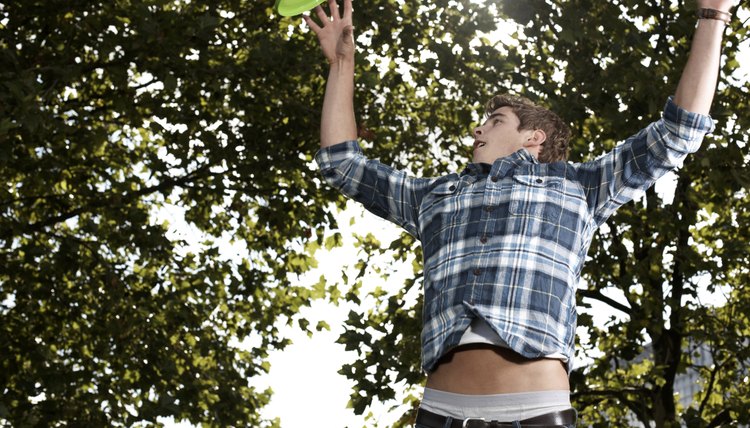What does fact checked mean?
At SportsRec, we strive to deliver objective content that is accurate and up-to-date. Our team periodically reviews articles in order to ensure content quality. The sources cited below consist of evidence from peer-reviewed journals, prominent medical organizations, academic associations, and government data.
- American Council on Exercise: Squat Jumps
- ExRx.net: Barbell Squat
- ExRx.net: Barbell Standing Leg Calf Raise
The information contained on this site is for informational purposes only, and should not be used as a substitute for the advice of a professional health care provider. Please check with the appropriate physician regarding health questions and concerns. Although we strive to deliver accurate and up-to-date information, no guarantee to that effect is made.
How To Get Your Legs Stronger To Jump Higher

Anytime you work your legs, you have the potential to build strength to propel you higher in your vertical jumps. Targeting the right muscles makes this more effective, but you can't stop there. Practicing some explosive jumping moves helps train the leg muscles to work together, increasing the strength of the upward-thrust so you can reach your jumping goals -- even if you only need them on your driveway basketball court.
Target your jumping muscles, such as your quadriceps, hamstrings and the gastrocnemius and soleus in your calf, during your normal leg workout. Perform lunges, squats, calf raises to build strength in these muscle groups.
Add weights to increase the intensity of your leg workout and build additional strength. Use a barbell when you squat and perform calf raises and dumbbells when you lunge, for example. When performing a farmer's walk with weight plates or dumbbells held by your sides, walk on your toes instead of on flat feet to build your calves.
Incorporate plyometric training, which builds strength while conditioning your leg muscles to work together as you jump. Plyometrics employs fast, powerful moves to build jumping strength. Perform jump squats, where you raise your arms and jump as you lift out of each squat, for example, or do tuck jumps, in which you jump quickly eight to 10 times in a row while trying to bring your knees up to your chest. Another option is lateral leg hops -- jumping from side to side using only one leg.
Add water resistance. Doing basic jumps in a pool can help build your jump height, or try exercises such as bounding, in which you jump forward on one leg at a time -- almost like an exaggerated run. Try other plyometric moves such as the squat jump, making sure the water isn't so deep that it goes over your head as you sink into the move. Pool plyometrics can result is less soreness and joint pain than plyometrics on land, according to Ohio State University.
